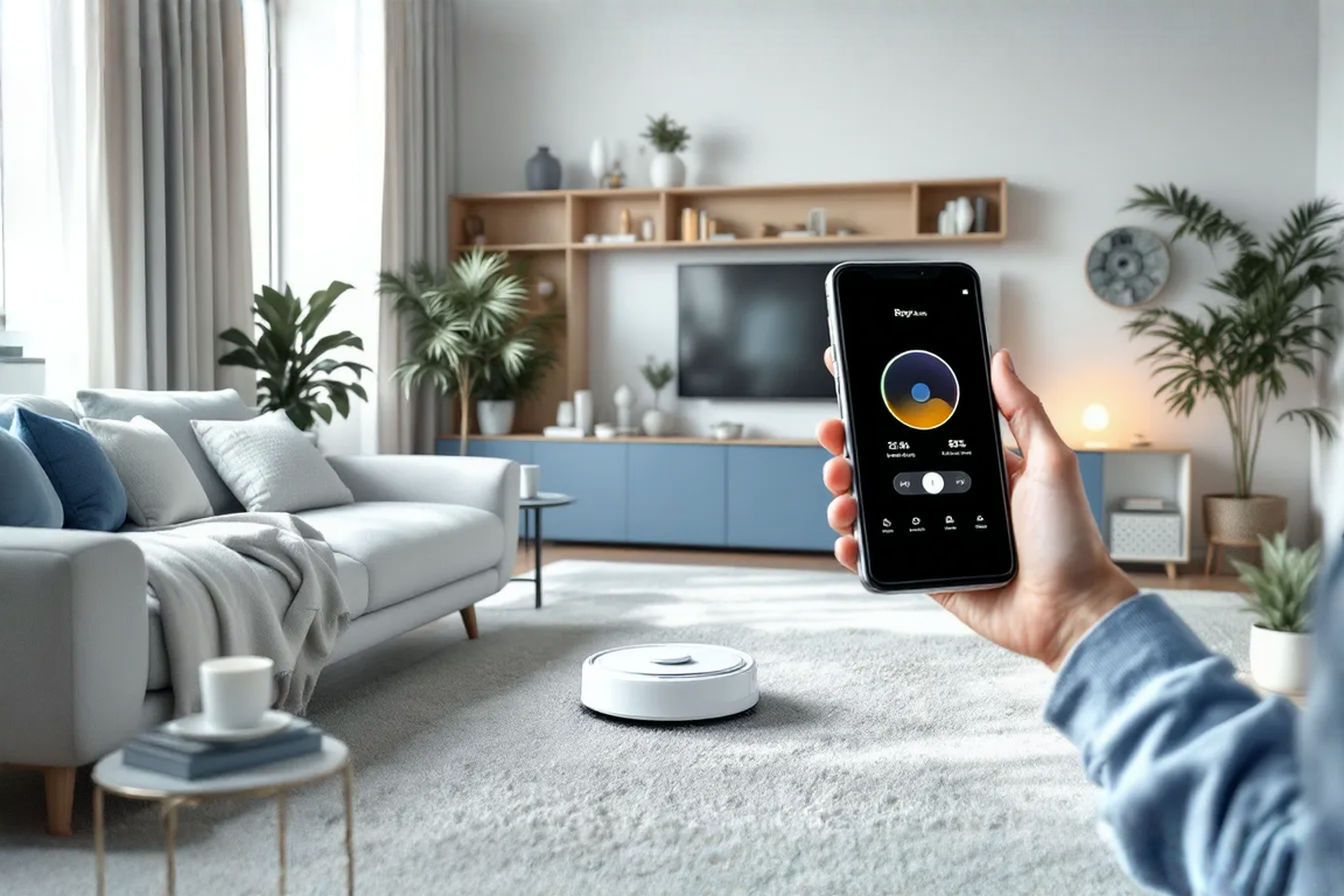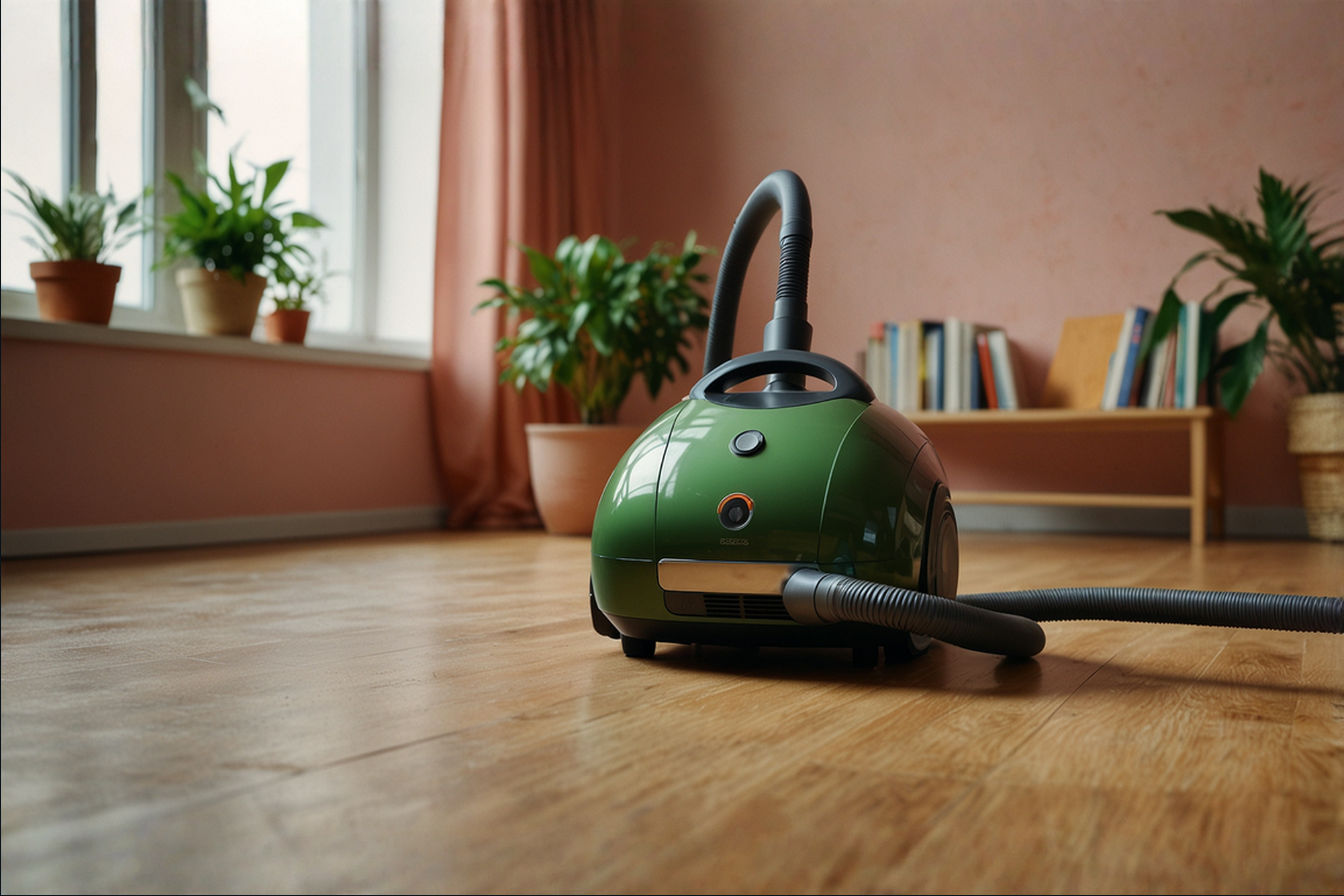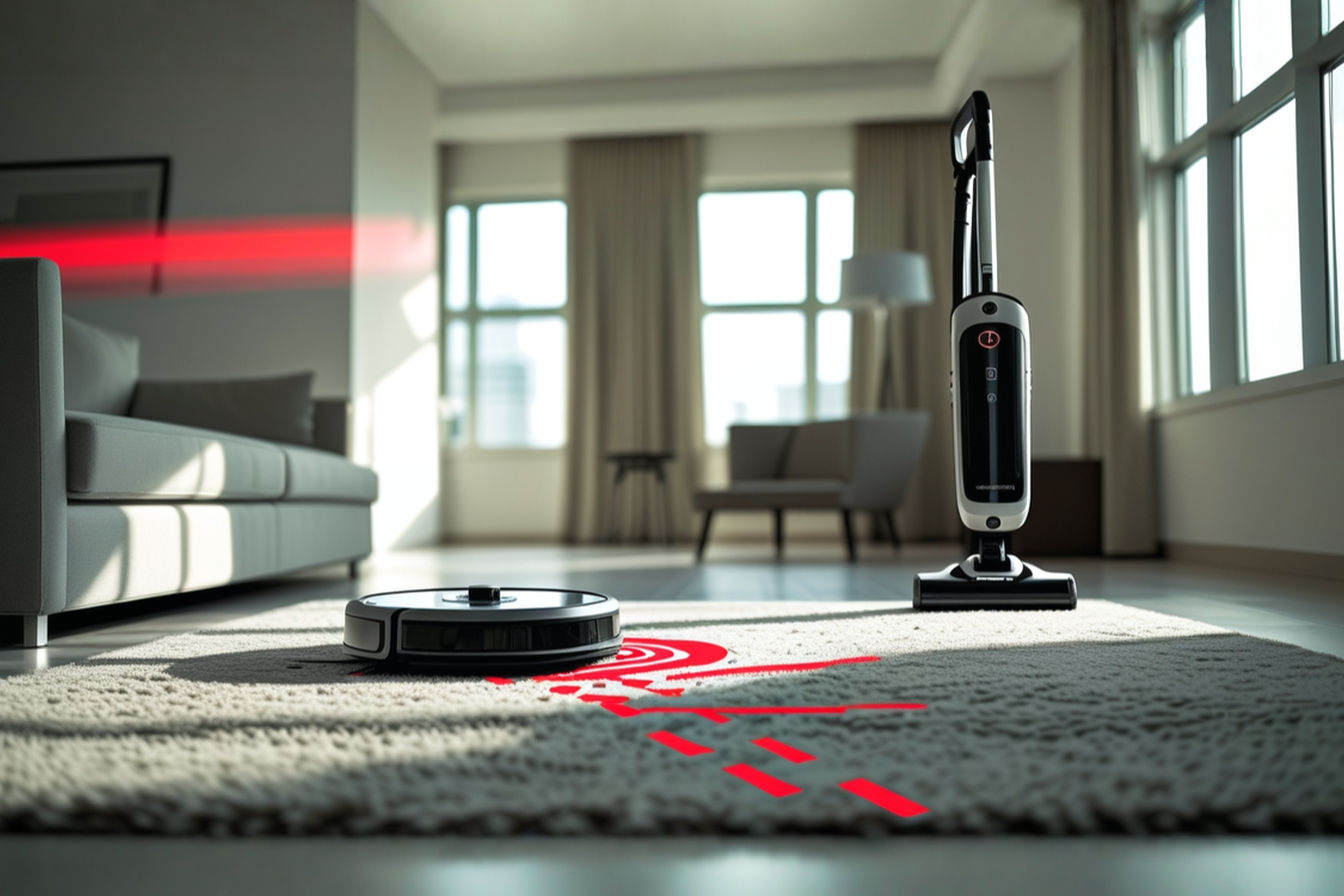Voice Assistant Vacuum Control: Mastering Advanced Commands Beyond Basic Functions
Unlock the full potential of your smart vacuum with advanced voice commands. Discover how to create custom routines, room-specific cleaning, and automate maintenance tasks.
This post may contain affiliate links. If you make a purchase through these links, we may earn a commission at no additional cost to you.
The evolution of smart home technology has transformed how we interact with household appliances. Robot vacuums, once simple automated devices, now respond to our voices, interpreting commands and carrying out complex cleaning tasks. However, many users limit themselves to basic voice commands, missing the full potential of these intelligent cleaning assistants.
Standard voice commands like “start cleaning” or “return to dock” merely scratch the surface of what modern smart vacuums can accomplish. The true power lies in the advanced voice control capabilities that remain untapped by most owners. These sophisticated features allow for customized cleaning schedules, room-specific instructions, and integration with broader smart home ecosystems.
This comprehensive guide explores how to set up and utilize voice commands beyond basic functions, enabling your smart vacuum to become a truly intelligent part of your home. Whether you use Alexa, Google Assistant, or Siri, you’ll discover how to unlock advanced features that transform your cleaning experience from simple automation to sophisticated orchestration.
Understanding Voice Assistant Integration with Smart Vacuums
Before diving into advanced commands, it’s essential to understand how voice assistants communicate with robot vacuums. This interaction depends on a complex technological relationship that enables seamless control through spoken words.
Voice assistant vacuum control works through cloud-based communication protocols. When you speak a command, your smart speaker or phone processes this request, sends it to the cloud for interpretation, then relays instructions to your vacuum’s app ecosystem. The app then transforms these instructions into specific actions your vacuum can understand and execute. This multi-step process happens in seconds, creating the impression of direct communication between you and your cleaning device.
Compatibility between major voice assistants and vacuum brands varies significantly. Alexa and Google Assistant offer the broadest integration options, working with most major brands including iRobot, Roborock, Shark, Ecovacs, and Neato. Siri, through Apple HomeKit, has more limited compatibility but is expanding its roster of supported devices. Before attempting advanced setups, verify that your specific vacuum model works with your preferred voice assistant.
Standard voice commands face several technical limitations. Many vacuums restrict voice control to basic functions due to hardware constraints, software limitations, or intentional feature segmentation. Additionally, the vocabulary recognized by voice assistants for vacuum control is often limited to specific phrases, making natural language interaction challenging.
Advanced voice control delivers substantial benefits for smart vacuum users. It enables precise cleaning management without opening apps, allows hands-free operation when you’re busy, and makes complex cleaning scenarios possible through automation. The ability to verbally direct where, when, and how your vacuum cleans transforms it from a simple tool into an intelligent household assistant.
Setting Up Basic Voice Control: The Foundation
Establishing solid basic voice control creates the foundation for advanced features. Each voice assistant requires specific setup steps to connect with your vacuum properly.
Initial Setup Process for Alexa Vacuum Commands
Amazon’s Alexa offers extensive vacuum voice control setup options. Begin by installing your vacuum manufacturer’s skill in the Alexa app. Open the app, navigate to “Skills & Games,” search for your vacuum brand, and enable the skill. You’ll need to link your vacuum account credentials to complete the connection. Once linked, say “Alexa, discover devices” to finalize the setup.
With Alexa connected, you can use basic commands like “Alexa, ask [vacuum name] to start cleaning” or “Alexa, tell [vacuum name] to go back to its base.” These fundamental instructions establish the communication framework necessary for more advanced controls.
Configuring Google Assistant Vacuum Control
Google Assistant vacuum control follows a similar but distinct process. Open the Google Home app, tap the “+” icon, select “Set up device,” then “Works with Google.” Find your vacuum manufacturer’s service, sign in with your vacuum app credentials, and complete the linking process.
Test basic commands such as “Hey Google, start the vacuum” or “Hey Google, stop the vacuum” to confirm proper connection. Google Assistant often uses slightly different phrasing than Alexa, so consult your vacuum’s documentation for recommended command structures.
Establishing Siri Vacuum Automation
Apple’s Siri vacuum automation is typically handled through the HomeKit framework or through Shortcuts. If your vacuum supports HomeKit directly (few currently do), add it through the Home app. For non-HomeKit vacuums, many manufacturers offer Siri Shortcuts integration through their iOS apps.
Create basic Shortcuts for common functions, then trigger them with phrases like “Hey Siri, run [shortcut name].” While Siri may require more setup than other assistants, it offers powerful automation capabilities once configured properly.
Common Setup Challenges and Solutions
Several issues frequently arise during initial setup. Connection failures often result from outdated firmware on either the vacuum or voice assistant device. Ensure both are running the latest software before attempting integration. Network problems can also cause setup failures – verify that your vacuum and voice assistant operate on the same Wi-Fi network.
Authorization errors typically stem from incorrect account credentials during the linking process. If persistent, try unlinking and relinking your accounts. Some vacuums require specific settings in their native apps before voice control works properly, so check manufacturer documentation for prerequisite steps.
Beyond Basic Commands: Advanced Voice Control Functions
Once basic communication is established, you can begin exploring the more sophisticated capabilities of your voice-controlled cleaning companion.
Understanding Your Vacuum’s Advanced Voice Capabilities
Modern robot vacuums offer numerous advanced vacuum voice commands that extend far beyond simple start/stop functions. These include cleaning specific areas, adjusting suction power, controlling mopping functions for hybrid models, and managing maintenance tasks.
Review your vacuum’s documentation and companion app to identify all available functions. Many manufacturers provide a complete list of compatible voice commands. Additionally, experiment with various command phrasings, as some advanced features may respond to multiple verbal cues.
Room-Specific and Zone Cleaning Commands
The ability to target specific areas represents one of the most useful advanced features. Voice control robot vacuum zones allow you to direct cleaning efforts precisely where needed without manually moving the device or opening an app.
For room-specific cleaning, first ensure your vacuum has completed mapping your home and that you’ve labeled rooms in the companion app. Once mapped, commands like “Alexa, tell [vacuum] to clean the kitchen” or “Hey Google, ask [vacuum] to clean the living room” will target just those areas.
Zone cleaning requires setting up designated cleaning zones in your vacuum’s app first. After configuration, voice commands such as “Alexa, ask [vacuum] to clean the dining table zone” direct the vacuum to focus on that specific area. This voice assistant room-specific cleaning capability proves especially valuable for quick cleanup of high-traffic or frequently soiled areas.
Setting Up Cleaning Intensity and Mode Control
Advanced vacuums offer various cleaning modes optimized for different situations. Voice commands can switch between these modes without app intervention. Try phrases like “Hey Google, set [vacuum] to max suction” or “Alexa, tell [vacuum] to use quiet mode.”
Some models also support specialized cleaning patterns or techniques. Commands such as “Alexa, tell [vacuum] to do a deep cleaning” or “Hey Google, ask [vacuum] to do a quick clean” activate these specialized modes when properly configured.
Controlling Maintenance Functions
Voice control extends to maintenance functions on sophisticated models. Commands for checking filter status, emptying the dustbin (for self-emptying models), or initiating self-cleaning functions streamline the ownership experience.
Examples include “Alexa, ask [vacuum] if it needs maintenance” or “Hey Google, tell [vacuum] to empty its bin.” The availability of these commands depends on your specific model’s capabilities, but they represent the cutting edge of hands-free vacuum management.
Creating Custom Routines and Schedules
The true power of voice assistant integration emerges when you begin creating personalized cleaning routines and schedules through voice commands.
Designing Effective Vacuum Voice Control Routines
Vacuum voice control routines combine multiple actions into a single voice command. Each assistant handles routines differently, but all offer powerful customization options.
In the Alexa app, navigate to “Routines,” select “Create Routine,” and define a trigger phrase like “Alexa, clean the house.” Then add actions such as starting the vacuum, setting specific cleaning parameters, and sending notifications when complete. Google Assistant and Siri offer similar functionality through their respective apps.
Effective routines consider cleaning flow logistics. For instance, sequence commands to clean high-traffic areas first, then move to less-used spaces. This sequencing optimizes the vacuum’s battery life and ensures the most important areas receive attention even if the cleaning cycle gets interrupted.
Scheduling Regular Cleanings with Voice Commands
Voice assistant scheduling vacuum functions allow you to set up recurring cleaning tasks through spoken instructions. Commands like “Alexa, schedule the vacuum to clean every Monday and Thursday at 2 PM” establish regular cleaning patterns without programming them in the vacuum’s app.
Voice-initiated scheduling offers greater flexibility than app-based schedules. You can quickly modify cleaning times based on changing needs with commands such as “Hey Google, reschedule today’s vacuum cleaning to 4 PM.” This dynamic scheduling adapts to your life rather than forcing you to adapt to predetermined cleaning times.
Setting Up Conditional Cleaning Automations
Advanced users can create conditional automations that trigger cleaning based on specific events or circumstances. For example, configure your system to start the vacuum when everyone leaves the house or when a certain time of day arrives if no motion has been detected.
These conditional triggers require integration with additional sensors or services, typically through platforms like Samsung SmartThings or using multi-step routines. While more complex to set up, conditional automations represent the highest level of cleaning intelligence.
Combining Vacuum Routines with Other Smart Home Actions
Integrate vacuum commands into broader smart home sequences for comprehensive automation. Create morning routines that include turning on lights, reading the news, and starting a quick vacuum session before you leave for work. Or establish evening routines that ensure your floors are cleaned after dinner while simultaneously dimming lights and adjusting the thermostat.
This holistic approach to home automation positions your vacuum as part of an intelligent ecosystem rather than as an isolated device. The result is a home that anticipates and responds to your needs with minimal manual intervention.
Integrating Vacuums with Smart Home Ecosystems
Expanding beyond the native capabilities of voice assistants opens new possibilities for vacuum control within comprehensive smart home systems.
Connecting Vacuums to Broader Smart Home Systems
Smart home vacuum integration allows your cleaning device to interact with other connected products. Major platforms like Samsung SmartThings, Hubitat, and Home Assistant can incorporate most voice-controlled vacuums into their ecosystems.
This integration enables cross-device automations and central management of all smart home functions. For example, when your smart doorbell detects your arrival, it can automatically pause the vacuum to prevent noise and interruption. These interconnected experiences rely on proper integration between your vacuum and other smart devices.
Using IFTTT for Advanced Vacuum Automation
The “If This Then That” (IFTTT) platform offers powerful IFTTT vacuum automation possibilities beyond what native voice assistants provide. IFTTT connects services and devices that might not otherwise work together, creating conditional automations called “applets.”
Create applets that trigger vacuum cleaning based on calendar events, weather conditions, or the status of other devices. For instance, set up an automation that starts the vacuum thirty minutes after your coffee maker finishes brewing, indicating you’ve likely finished breakfast. These creative scenarios extend vacuum control far beyond standard scheduling.
Linking Vacuum Control to Sensors and Triggers
Strategic placement of motion, door, or pressure sensors creates responsive cleaning automations. Configure door sensors on your entryway to trigger the vacuum to clean the foyer when you leave. Or use pressure sensors under dining chairs to initiate cleaning around the table after meal times when chairs have been pushed back.
These sensor-based triggers transform your vacuum from a device that cleans on a schedule to one that responds intelligently to actual home activities. While requiring additional hardware, this approach delivers truly adaptive cleaning.
Multi-Platform Integration Strategies
Most households use multiple smart home platforms simultaneously. Perhaps you use Alexa primarily but have some Google-based devices, or you incorporate Apple HomeKit alongside other systems. Effective voice assistant vacuum control requires strategies for managing these mixed environments.
Hub platforms like Samsung SmartThings can bridge different ecosystems, allowing unified control. Alternatively, IFTTT can create connections between otherwise incompatible systems. For households with multiple voice assistants, consider standardizing vacuum control commands through a single preferred platform to prevent confusion and conflicts.
Customizing Voice Commands for Your Needs
Personalizing how you speak to your vacuum enhances both convenience and control precision.
Creating Custom Vacuum Voice Commands
Custom vacuum voice commands allow you to define personalized phrases that feel natural and intuitive. Instead of remembering manufacturer-specified language, you can establish phrases that make sense to you.
In Alexa, create custom phrases through Routines by defining a trigger phrase like “Alexa, clean up the mess” that activates your preferred vacuum function. Google Assistant offers similar functionality through its Routines feature, while Siri uses Shortcuts to create custom command phrases.
The most effective custom commands are memorable, distinct, and descriptive of the action they trigger. Avoid phrases that sound similar to other commands to prevent misinterpretation by your voice assistant.
Personalizing Command Phrases for Different Users
Different household members may prefer different command phrasings. Most voice assistants support user profiles that enable personalized interactions based on voice recognition.
Configure voice profiles for each household member, then set up individual command preferences. This personalization allows everyone to interact with the voice controlled robot vacuum in ways that feel intuitive to them, increasing the likelihood that all household members will utilize the vacuum’s full capabilities.
Setting Up Shortcuts for Complex Commands
Voice shortcuts condense multi-step processes into simple phrases. Rather than saying “Alexa, tell the vacuum to clean the kitchen, then the dining room, and then return to the dock,” create a shortcut like “Alexa, clean after dinner” that executes this entire sequence.
These shortcuts prove especially valuable for frequently used command sequences. Identify your most common cleaning scenarios and create appropriate shortcuts for each. The result is a streamlined interaction model that feels conversational rather than technical.
Voice Command Variations for Different Scenarios
Different cleaning situations may require varied command approaches. Create distinct command sets for quick touch-ups versus deep cleaning, for morning versus evening sessions, or for weekday versus weekend usage patterns.
For example, “Alexa, morning cleanup” might trigger a quick fifteen-minute cleaning of high-traffic areas before you leave for work. In contrast, “Alexa, weekend deep clean” could initiate a comprehensive cleaning of the entire home at maximum suction power. These scenario-based command variations adapt to your lifestyle needs without requiring multiple manual configurations.
Multi-User Voice Control Setup
Households with multiple members require thoughtful configuration to ensure harmonious vacuum control.
Configuring Voice Profiles for Different Household Members
Most voice assistants offer multi-user support through voice recognition. This technology distinguishes between different household members, enabling personalized interactions.
Set up individual voice profiles by following your assistant’s voice training process. For Alexa, use the “Voice” section in account settings. Google Assistant offers voice matching during device setup or through the Voice Match settings. Once configured, the assistant recognizes who is speaking and can provide personalized vacuum control based on individual preferences.
Managing Permissions and Access Levels
Not all household members may need equal control over vacuum functions. Parents might want to limit children’s ability to initiate certain cleaning modes or schedules. Establish permission hierarchies through your voice assistant’s user management features.
For shared living situations, consider creating agreed-upon protocols for vacuum control. These might include designated times when certain users have priority for scheduling or rules about overriding existing cleaning plans. While not technical constraints, these social agreements prevent conflicts over voice assistant vacuum control.
Handling Conflicting Commands Between Users
When multiple people issue contradictory vacuum instructions, conflicts can arise. Voice assistants typically handle this by following the most recent command, but this behavior may not always align with household priorities.
Some advanced vacuums allow priority user designation in their native apps. The primary user’s commands take precedence when conflicts occur. Alternatively, establish household rules about who has authority over vacuum functions during specific times or situations.
Voice Recognition Optimization Techniques
Improve voice command accuracy by optimizing recognition settings. Place voice assistant devices in central locations where they can clearly hear commands from anywhere vacuum control might be needed. For larger homes, consider multiple assistant devices to ensure coverage throughout the space.
Regularly update voice profiles, especially as voices change over time. Children’s voices, in particular, evolve rapidly and may require frequent profile updates. Additionally, train the system with the specific vacuum-related commands each user commonly employs to improve recognition accuracy for those phrases.
Troubleshooting Advanced Voice Control Issues
Even well-configured systems occasionally encounter problems. Knowing how to diagnose and resolve these issues ensures consistent performance.
Diagnosing Common Voice Command Failures
When your vacuum doesn’t respond properly to voice instructions, several common culprits may be responsible. Command misinterpretation occurs when the assistant doesn’t properly understand your request. Try rephrasing using recommended command structures from your manufacturer’s documentation.
Connection issues between your voice assistant and vacuum often manifest as delayed responses or failures to execute commands. These typically stem from Wi-Fi problems, cloud service outages, or synchronization errors between platforms. Check your network status and the operational status of both your assistant’s and vacuum’s cloud services.
App permission problems can block command execution despite successful recognition. Ensure your vacuum’s app has all necessary permissions enabled and that the integration with your voice assistant remains authorized and active.
Resolving Connectivity Problems Between Assistants and Vacuums
Network issues represent the most common source of connectivity problems. Ensure your vacuum and voice assistant devices maintain strong Wi-Fi connections, ideally on the same network. For large homes, mesh Wi-Fi systems help eliminate dead zones that might interrupt communication.
When persistent connectivity issues occur, try removing and re-adding your vacuum to your voice assistant platform. This process refreshes authorization tokens and updates device information, often resolving stubborn connection problems. As a last resort, factory reset your vacuum and reconfigure all integrations from scratch.
Fixing Routine and Scheduling Errors
Vacuum voice control routines sometimes fail due to timing conflicts, missing dependencies, or logic errors. Review routine configurations to ensure all steps remain valid and necessary components are still connected and operational. For scheduling problems, verify that time zone settings match across all devices and platforms.
Investigate whether routine failures coincide with software updates to either your vacuum or voice assistant. Updates occasionally change API endpoints or command structures, requiring routine adjustments. Check manufacturer forums or support channels for reports of similar issues following recent updates.
When to Reset and Reconfigure Your Setup
When troubleshooting fails to resolve persistent problems, a systematic reset and reconfiguration may be necessary. Begin with the least disruptive approach by refreshing integrations between your vacuum and voice assistant. If problems persist, reset your voice assistant’s device-specific settings, maintaining your overall account configuration.
As a final measure, perform a complete factory reset of your vacuum, reinstall its app, and rebuild all voice control integrations. While time-consuming, this comprehensive approach resolves even the most persistent vacuum voice control setup issues by eliminating configuration errors that might have accumulated over time.
Privacy and Security Considerations
The convenience of voice control requires thoughtful attention to privacy and security implications.
Understanding Data Collection in Voice-Controlled Vacuums
Voice assistant vacuum control systems collect several data types during operation. Voice recordings capture your commands, mapping data creates detailed floor plans of your home, and usage patterns reveal your daily routines. This information enables improved functionality but raises legitimate privacy concerns.
Review privacy policies for both your vacuum manufacturer and voice assistant platform to understand what data gets collected, how it’s processed, and where it’s stored. Most platforms allow you to view and delete historical data, though some information may be retained for system functionality.
Securing Your Smart Vacuum Against Unauthorized Access
Protect your vacuum and the data it contains by implementing strong security practices. Use unique, complex passwords for your vacuum app account and voice assistant platform. Enable two-factor authentication when available to prevent unauthorized access even if passwords become compromised.
Regularly update firmware for both your vacuum and voice assistant devices to protect against known vulnerabilities. Manufacturers frequently release security patches that address newly discovered exploits. Enabling automatic updates ensures you receive these protections promptly.
Consider your network security as well. Place smart home devices on a separate network or VLAN from your primary computers and phones when possible. This segmentation limits potential damage if a single device becomes compromised. Additionally, disable unnecessary features like remote control when not needed to reduce potential attack vectors.
Managing Voice Recording Storage and Usage
Most voice assistants store recordings of your commands in the cloud. These recordings help improve voice recognition but create privacy implications. All major platforms offer options to manage this data.
Access voice history through your assistant’s privacy settings and periodically review and delete recordings. Some platforms allow you to disable long-term storage of voice data, though this may slightly reduce recognition accuracy. Consider configuring automatic deletion after a certain time period as a compromise between functionality and privacy.
For particularly sensitive environments, look for vacuums and voice assistants that offer local processing options. These systems keep more data on your devices rather than in the cloud, reducing exposure to potential data breaches or unwanted analysis.
Balancing Convenience with Privacy
The convenience of smart vacuum voice commands inevitably creates privacy tradeoffs. Consider which features genuinely improve your experience versus those that require sharing more data than you’re comfortable with. For example, detailed home mapping significantly enhances cleaning efficiency but also creates a digital blueprint of your living space.
Create a personal privacy threshold based on your comfort level. Some users freely embrace all connected features, while others prefer minimal cloud connectivity even at the cost of reduced functionality. Most households fall somewhere between these extremes, selectively enabling features based on their value and privacy implications.
Remember that household members may have different privacy preferences. Establish family agreements about which features to enable and what data to share. These conversations ensure everyone understands and consents to the privacy choices made for shared devices.
The Future of Voice Assistant Vacuum Control
Voice control technology continues to evolve rapidly, with several emerging trends poised to transform how we interact with our cleaning devices.
Emerging Trends in Voice Control Technology
Natural language processing improvements will soon allow more conversational interactions with vacuums. Rather than learning specific command phrases, you’ll communicate in everyday language like telling a human assistant what you need. This evolution will make advanced vacuum voice commands more accessible to non-technical users.
Contextual awareness represents another significant advancement on the horizon. Future systems will understand situational context, allowing commands like “clean up this mess” while pointing to a specific area. This spatial awareness will eliminate the need for predefined zones and room designations in many scenarios.
Multimodal interactions combining voice with gestures, app inputs, or even facial expressions will create more intuitive control experiences. These hybrid interaction models provide precision when needed while maintaining the convenience of hands-free operation.
AI Advancements in Smart Vacuum Capabilities
Artificial intelligence will dramatically enhance vacuum capabilities beyond current limitations. Predictive cleaning systems will learn household patterns and proactively suggest optimal cleaning schedules based on your activities. These systems might notice you typically have breakfast at 8 AM and automatically schedule kitchen cleaning for 9 AM when you’re likely to be finished.
Object recognition technology will enable vacuums to identify and appropriately handle different items they encounter. Future models will distinguish between harmless dust and items that require avoidance or special handling, reducing the need to “vacuum-proof” rooms before cleaning.
Adaptive learning algorithms will continuously improve cleaning performance based on your feedback and behavior. If you frequently request re-cleaning of certain areas, the system will automatically increase attention to those spaces in future cycles without explicit instructions.
Anticipated Features in Next-Generation Voice Assistants
Voice assistants themselves are evolving in ways that will enhance vacuum control. Emotion recognition technology will detect frustration or urgency in your voice, adjusting responses accordingly. If you sound stressed about a spill that needs immediate cleaning, the system will prioritize that task over other scheduled activities.
Enhanced personalization will tailor interactions to individual preferences automatically. The assistant will learn which cleaning patterns and schedules each household member prefers and adjust recommendations based on who is speaking, creating truly personalized experiences without manual configuration.
Proactive suggestions based on environmental monitoring represent another frontier. Future systems might say, “I’ve noticed higher than usual dust levels in the living room. Would you like me to run the vacuum?” These anticipatory capabilities transform the assistant from a command receiver to an active home management partner.
Preparing Your Setup for Future Enhancements
To maximize compatibility with upcoming features, maintain current firmware on all devices. Manufacturers often add new capabilities through software updates, and outdated systems may miss these enhancements. Enable automatic updates when available to ensure you receive new features promptly.
Choose ecosystems with strong developer support and open API access. These platforms typically receive new features more quickly and support broader integration options. When purchasing new equipment, research the manufacturer’s track record for supporting older models with new features rather than restricting innovations to new hardware purchases.
Consider future-proofing your home’s infrastructure with robust Wi-Fi coverage, sufficient bandwidth, and adequate smart home hub capabilities. These foundational elements ensure your system can handle increasingly sophisticated interactions between voice assistants and connected vacuums without performance degradation.
Conclusion
Mastering voice assistant vacuum control beyond basic functions transforms your cleaning experience from simple automation to sophisticated orchestration. The journey begins with proper setup of fundamental connections between your voice assistant and vacuum, then progresses through increasingly advanced control schemes that adapt to your specific needs and preferences.
The ability to direct room-specific cleaning, create custom routines, integrate with broader smart home systems, and personalize command phrases puts unprecedented control at the tip of your tongue. These capabilities save time and effort while ensuring your home receives optimal cleaning attention exactly when and where it’s needed.
As you implement the strategies outlined in this guide, remember that effective voice control balances technical capability with practical usability. The most sophisticated automation provides little value if it’s too complex to use regularly. Focus on configurations that genuinely enhance your cleaning experience rather than adding complexity for its own sake.
Looking forward, the relationship between voice technology and home automation will continue to deepen, with increasingly intelligent systems that anticipate needs and respond to natural communication. By establishing strong foundations now, you position yourself to benefit from these advancements as they emerge, ensuring your smart home evolves alongside technology.
The future of voice-controlled vacuums isn’t just about cleaner floors—it’s about creating living spaces that respond intelligently to our needs with minimal effort. That future begins with the advanced voice commands you implement today.






